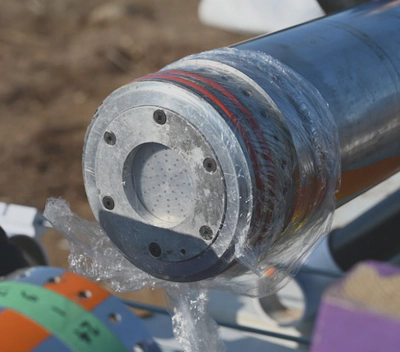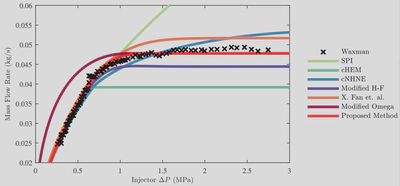Design of Two-Phase Injectors Using Analytical and Numerical Methods with Application to Hybrid Rockets
Presented at the AIAA Propulsion and Energy Forum

Overview: Designed a hybrid rocket engine’s injector, creating MATLAB and OpenFOAM CFD simulations, executed on HPC cloud clusters, achieving 3.9% error in simulating two-phase N2O mass flow. Results published in the AIAA Propulsion and Energy Forum proceedings and used as a resource in Stanford’s graduate-level Advanced Rocket Propulsion course
Abstract: Liquid injectors under certain conditions may experience cavitation, resulting in two-phase flow which complicates their design and analysis as traditional mass flow rate models are invalid. We evaluated a wide range of analytical models from the literature and concluded that they fall short of a definitive prediction of two-phase mass flow rate.
We addressed this problem by proposing a model capable of predicting mass flow rate and critical pressure with an average error of 3.9%. CFD simulation results using different numerical approaches are presented. An Euler-Euler-VOF hybrid solver predicts mass flow rate with an average error of 3.6%. A design methodology incorporating the analytical and CFD models is presented and used to design a two-phase axial injector for a N2O-Paraffin hybrid rocket engine.


![Vapor cavity development as predicted by VOF (top), Euler-Euler (middle), and Euler-Euler-VOF (bottom) CFD methodologies. Streamlines coloured by velocity magnitude; Liquid volume fraction iso-volume for α = [0 0.6] is shown in blue.](/media/two_phase_injector_labeled_hub1d071d1b9e3f16a993c2c7358e22fb7_1233099_946bbcfdfe9a61d5806a9e04c1cfe2c1.webp)